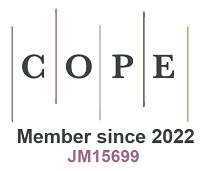Volume 4, Issue 3 (September, 2024) – 16 articles
Cover Picture: Metal–organic frameworks (MOFs) have garnered significant attention in the field of catalysis due to their unique advantages such as diverse coordination geometry, variable metal nodes, and organic linkers, facilitating precise structural and compositional control for achieving programmable catalytic functionalities. Although their inherent microporous structure could provide excellent shape selectivity during catalysis, it typically impedes the mass transfer process, thereby reducing the use of internal active sites and overall catalytic efficiency. Additionally, employing single MOFs as catalysts presents challenges in achieving complex catalytic reactions that require multifunctional active sites. In recent years, considerable research efforts have focused on designing and constructing hierarchical nanostructured MOFs to alleviate substrate diffusion limitations by introducing secondary nanopores, shortening diffusion distances via the construction of low-dimensional nanoarchitectures, and constructing multifunctional catalysts by integrating distinct MOFs with suitable functions. This review provides a comprehensive overview of the design, synthesis methods, and formation mechanisms of MOF-based hierarchical nanostructures in recent years. Subsequently, it further highlights their applications in thermal catalysis, electrocatalysis, and photocatalysis, along with the relationship between their hierarchical nanostructures and catalytic performances. Finally, it provides an outlook on the challenges and potential development directions of hierarchically structured MOF nanocatalysts.
view this paper Back Cover Picture: Cu-catalyzed electrochemical CO2 reduction reaction (CO2RR) to multi-carbon (C2+) products is often plagued by low selectivity because the adsorption energies of different reaction intermediates are in a linear scaling relationship. Development of Cu-based bimetallic catalysts has been considered as an attractive strategy to address this issue; however, conventional bimetallic catalysts often avoid metals with strong CO adsorption energies to prevent surface poisoning. Herein, we demonstrated that limiting the amount of Co in CuCo bimetallic catalysts can enhance C2+ product selectivity. Specifically, we synthesized a series of CuCox catalysts with trace amounts of Co (0.07-1.8 at%) decorated on the surface of Cu nanowires using a simple dip coating method. Our results revealed a volcano-shaped correlation between Co loading and C2+ selectivity, with the CuCo0.4% catalyst exhibiting a 2-fold increase in C2+ selectivity compared to the Cu nanowire sample. In situ Raman and Infrared spectroscopies suggested that an optimal amount of Co could stabilize the Cu oxide/hydroxide species under the CO2RR condition and promote the adsorption of CO, thus enhancing the C2+ selectivity. This work expands the potential for developing Cu-based bimetallic catalysts for CO2RR.
view this paper









